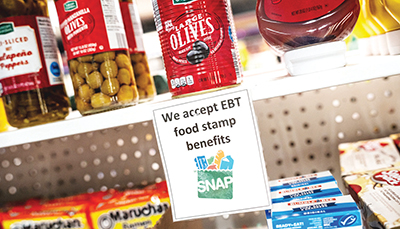By SARAH MORENO | MIAMI HERALD/TNS
(Source: Daytona Times)
October is a crucial month for low-income families. The Supplemental Nutrition Assistance Program, known as SNAP, is increasing food benefits in response to rising inflation, which this year has hit Americans’ wallets with higher grocery costs.
A cost-of-living adjustment is also applied for Social Security recipients.
This year, the COLA announcement for 2026 was postponed until Oct. 24 due to the partial federal government shutdown which, if it continues into November, could affect SNAP assistance because of insufficient funds, the Department of Agriculture warned.
The increase in SNAP benefits for a single person is $6 per month for fiscal year 2026, which began in October. That means that person now receives $298 per month on their EBT card, where SNAP benefits are deposited.
For two people, maximum benefits rose to $546; for three, $785; and for four, $994.
The income limits were also raised, allowing more families to qualify for program assistance. A family of four can now earn up to $3,483 per month in gross income (previously $3,380) or $2,680 in net income (previously $2,600), according to Marca.
SNAP benefit changes are calculated using food costs in June for following a nutritious, low-cost diet, known as the Thrifty Food Plan. To determine the SNAP benefit amount, household size and the members’ incomes are taken into account.
Food prices have risen more than 20% for coffee, 10.9% for eggs, and 12.8% for ground beef, indicating that SNAP assistance may be insufficient to cover the cost of a basic grocery basket.
These figures make it harder to afford groceries in cities where residents’ incomes are low relative to the cost of living, such as Hialeah and Miami—identified in a WalletHub study as among the most expensive places to buy food.
In Florida, SNAP helps 3 million low-income people. The average monthly benefit per user is $184. In Miami-Dade, nearly a quarter of households depend on SNAP to buy groceries, the fifth-highest rate of any Florida county, according to Census Bureau data.
SNAP could run out of funds
The situation could worsen in November when SNAP could run out of money to meet expenses due to the partial federal government shutdown, the Department of Agriculture said.
“We will run out of money in two weeks,” Agriculture Secretary Brooke Rollins told reporters outside the White House last week. “So we are talking about millions and millions of vulnerable families, hungry families, who will not have access to these programs because of this shutdown.”
That would leave more than 40 million low-income people — about one in eight Americans — without food assistance, including roughly 16 million children, 8 million older adults, and 4 million people with disabilities.
SNAP has a contingency fund that can cover nearly two-thirds of the amount needed for a full month of benefits, according to the Center on Budget and Policy Priorities, which urged the Trump administration to “release that money immediately and provide guidance to states on the amount of SNAP benefits they should issue in November, as required by SNAP law, to ensure families can put food on the table next month.
The SNAP program also tightened work requirements for its recipients starting in October. Adults ages 55 to 64 without dependent children must work at least 20 hours a week or participate in training programs to keep their benefits.
Exemptions apply for pregnant people, veterans, people experiencing homelessness, and adults with children under 14.
In a difficult labor market where wages are not rising fast enough to keep up with price increases, cuts to food assistance programs could leave many families in critical situations. It would also affect many older adults who receive SNAP and who do not get enough from the Social Security COLA increase to meet inflation.

